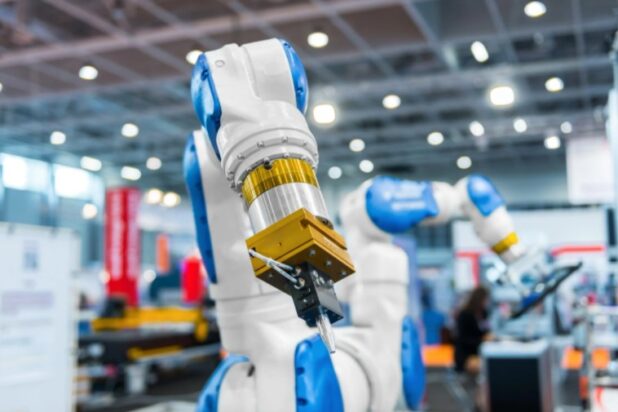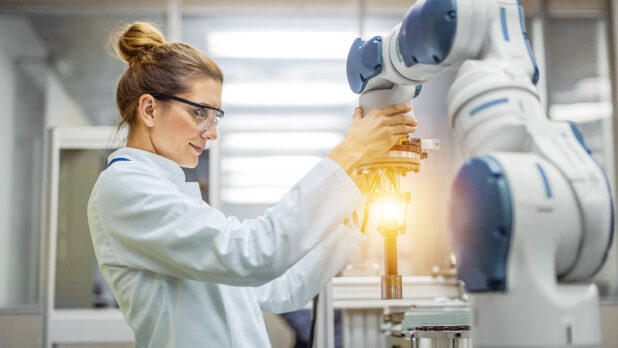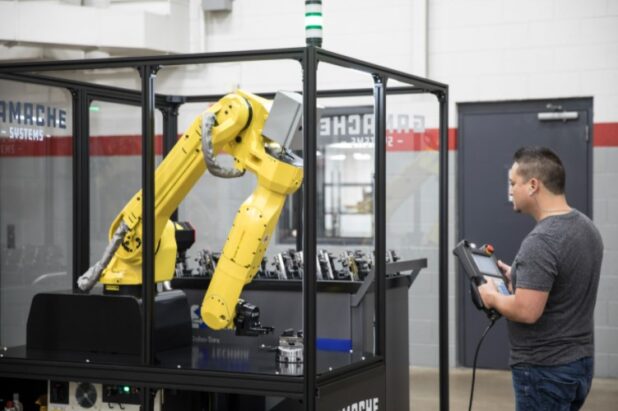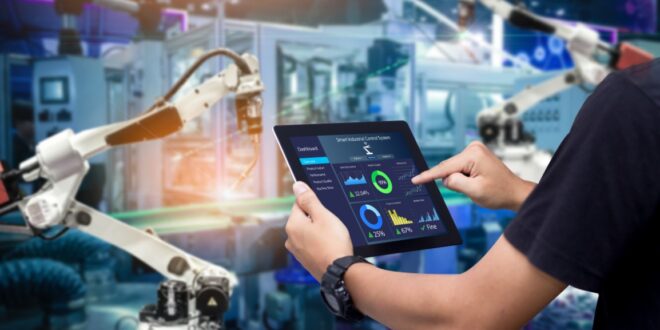If you want your business, based on the production of various items using CNC or molding machines, to constantly develop and progress, it is vital that you continuously improve it. You need to think about how you can raise the performance of your machines and production in general to a higher level, and also improve the quality of your products. One of the very effective ways to achieve this is machine tending. If you are not familiar with this process, below the article you can read more about how machine tending can optimize your production, improve efficiency, and increase profits.
Table of Contents
What exactly is machine tending?

Before we explain all the benefits of using machine tending, it is necessary to have a clear picture of what this process represents and why it makes sense to consider it in your company. The term ‘tending’ in general refers to the process of providing a particular type of treatment. In the machine industry, it implies the process of applying collaborative robots in order to improve the performance and efficiency of CNC and other machines, as well as to improve the quality of final products.
As we know, most of these jobs are done by people who are supposed to load and unload a CNC (or molding) machine. In practical terms, this means that they have to install a part or material over and over again in order for the machine to process them, and then to remove it when the production process is complete. And then the process continues in the same way.
This type of job is quite tedious, and not just that – it also requires certain workers’ qualifications that can be difficult to find these days. So, if this is your case, we recommend you to take into consideration all the factors and conclude whether this part of the job could be automated and replace humans with robots. If this is your final conclusion, the next step is to learn more about machine tending and how you can apply it in your company.
What are collaborative robots and how do they work?

Collaborative robots are also called cobots. They represent robots that are limited in power and force, which enables them favorable properties for application on CNC and other production machines. This means that they can be placed next to the machines, without the need for other protection features and insulation to be provided in order to increase safety. Due to their limited power, cobots can stand right next to the machine (or worker) and perform their functions without any concern that they will endanger the function of the equipment or the safety of the workers.
However, when choosing a cobot for your company it is essential that you get to know these powerful assistants a little better. The goal is to, with machine tending help, achieve faster, more efficient, and better load and unload of the machines that you use for production. But the most important thing here is that the robot you choose can surpass even humane performance. You will not want to replace a human being with a robot if it cannot provide you many times more benefits than an employee can.
If you are looking for a suitable robotic machine tending to improve the performance of your CNC and other machines, we suggest you consider any professional company near you.
Machine tending safety

Probably one of the main obstacles when business owners are considering whether to introduce collaborative robots into their business is endangering the safety of employees and surrounding equipment. However, one of the main benefits that cobot offers is that, in addition to performance optimizations, it also provides the maximum level of safety, both for your equipment and for the workers who will be located near this machine tending solution. Why is this the case?
Well… primarily because robots come with certain functions that are built into their system, which ensure the maximum level of security. There is no possibility for these robots to hit something or someone and cause damage or injury. Why? Due to the possibility of performing their configuration so that they move only in the limited space provided for their work. This means that, once you explain to them where and how they should work on loading and unloading CNC machines, they will continue to do it, in the same way, each time. This way, the possibility of injury is minimized and safety is maximized at the same time.
Also, every time the cobot comes in contact with something, it will stop immediately, instead of continuing to work and cause damage. All this clearly shows that machine tending will be a great addition to your workplace and that it will be able to improve product quality and production efficiency without requiring any additional treatment to prevent damage.
More machine tending benefits
In addition to the fact that collaborative robots allow work to be done in situations where you cannot find adequate workers, it can also be a better option than humans when it comes to positions that require high concentration and carry great danger, as well as those that are boring and monotonous. You will also be able to increase the speed and efficiency of production, which will lead to selling more products in a shorter time and increase your profit and the speed of the company’s development. And of course, the quality of the product itself can be significantly improved in this way.
Conclusion
If your company is engaged in the production of various items with the help of CNC machines then you know that it is necessary to have someone who will load and unload these machines during the manufacturing process. Sometimes it is difficult to find workers for these positions, so a practical solution may be to use machine tending. And not only will collaborative robots ensure that your job is done, but they will even improve performance and production efficiency, all with a high level of security.
 World Magazine 2024
World Magazine 2024






